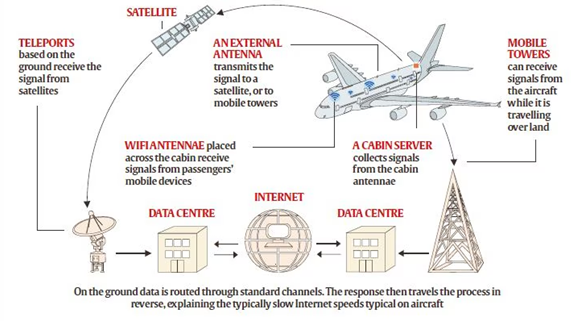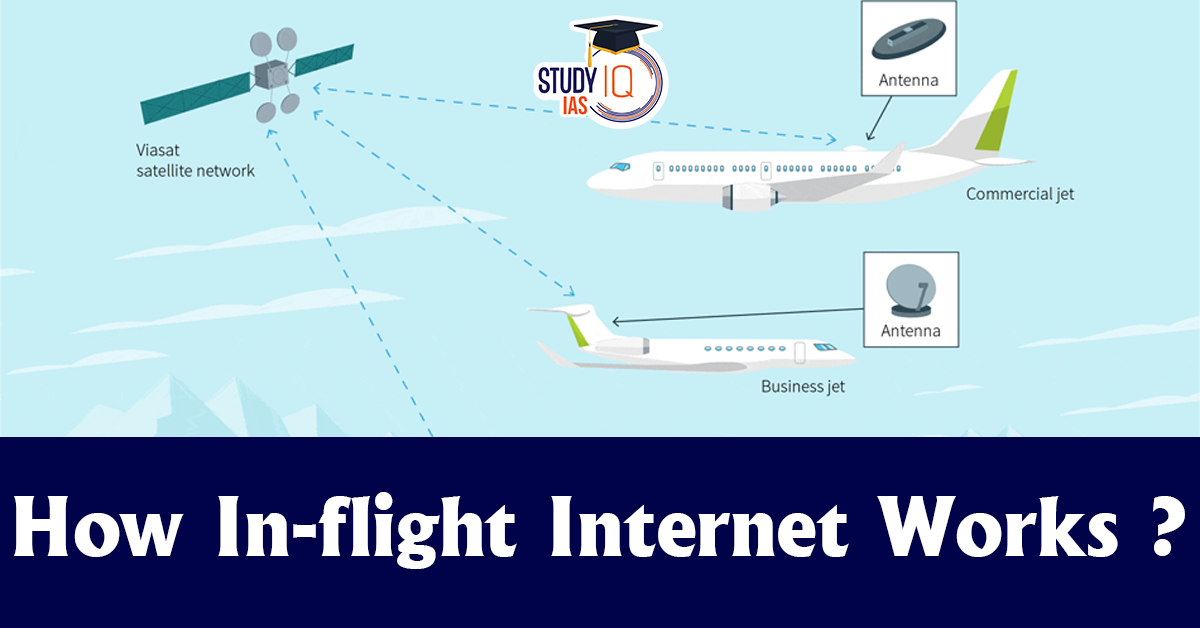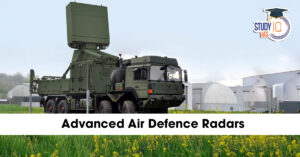Air India has announced the rollout of Wi-Fi Internet connectivity services on select domestic and international flights. It is the 1st Indian airline to offer Internet connectivity on domestic flights.
Technologies Behind In-Flight Wi-Fi
Air-to-Ground (ATG) Technology
- Uses cellular towers on the ground.
- Signals are picked up by an antenna beneath the aircraft.
- Limitations: Connectivity may be interrupted over large water bodies or unpopulated areas without towers.
Satellite-Based Connectivity
- Relays signals between ground stations and satellites via an antenna on the aircraft’s body.
- Offers wider coverage, especially useful over remote areas without cellular towers.

Process
- Signals from passengers’ devices are picked up by in-cabin Wi-Fi antennas.
- These signals are routed to an on-board server.
- From the server, signals are transmitted to either satellites (for satellite-based connectivity) or ground towers (for ATG).
- Aircrafts that offer Wi-Fi: Airbus A350, Boeing 787-9 and Airbus A321neo.
Challenges
- Installing Wi-Fi antennae involves significant costs. Air India is undergoing a $400-million retrofit programme to upgrade its older planes with Wi-Fi hardware.
- In-flight Wi-Fi is slower than ground-based Internet.


 Advanced Air Defence Radars: Types, Comp...
Advanced Air Defence Radars: Types, Comp...
 Ion Chromatography, Working and Applicat...
Ion Chromatography, Working and Applicat...
 Broadly Neutralising Antibodies (bNAbs):...
Broadly Neutralising Antibodies (bNAbs):...

























